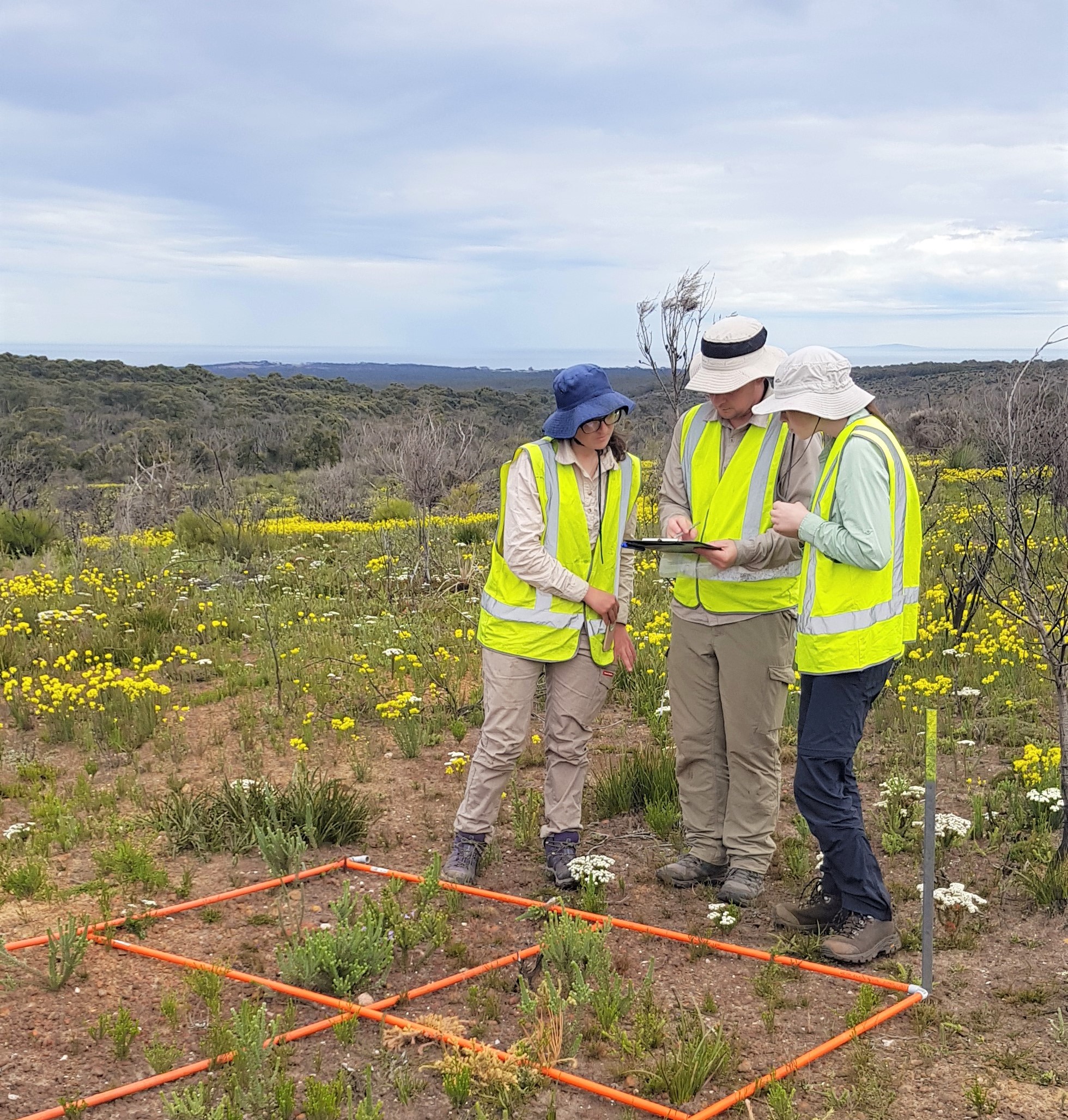Monitoring and Evaluating (ME) Conservation Outcomes
Ensuring long-term impact
We understand the importance of evaluating the efficacy of nature-based and biodiversity work and identifying ways to be responsive and adaptive for maximum impact.
Using our analytical skills, we develop frameworks for consistent and comprehensive data collection and reporting and to identify performance and outcomes. There are many reasons why monitoring and evaluation is valued, including:
- Provides opportunities to be adaptive at the right time
- Enables documentation of project and program learnings
- Provides transparency and rationale for prioritisation, decision making and investment
- Assists with the identification of gaps and complementarities (mitigates against “silo” effects)
- Ensures that data is reliable, relevant, and needed
- Provides a logical and implementable approach to evaluation
As examples, we have undertaken the following ME projects
Designing a Long-Term Biodiversity Monitoring Program
We worked with State Government and an environmental community group to review monitoring objectives, current datasets, different methodologies and propose options for a long-term biodiversity monitoring program. This was presented as a Discussion and Recommendations Paper and included the development of principles, success indicators, data consolidation and a critique of different monitoring techniques.

Monitoring, Evaluation, Reporting and Improvement Plan for an environmental not for profit organisation
In collaboration with key staff and board members, we developed a 5-year MERI Plan that consolidated all work elements of the organisation. This will enable them to report on success and demonstrate its impact from a whole-of-organisation perspective, without diluting the value of individual programs and projects. A framework was provided for systematically reviewing and evaluating outputs and reporting achievements and impact. The framework included outcomes, key evaluation questions, performance indicators and targets.
Private Conservation in South Australia
For this project, we developed a ME Plan, and conducted the evaluation to identify the ecological, biodiversity, socio-economic and climate change advantages of managing native vegetation and habitats on private land.
Berry Road Restoration Monitoring and Evaluation Framework
We provided monitoring and evaluation guidance for a restoration and research project that was focussed on the recovery of a critically endangered wetland community in the Fleurieu Peninsula.
New and emerging work
We have started working with stakeholders to develop evaluation and restoration approaches that will result in biodiversity and ecosystem function and landscape scale resilience.
Contact us if you’d like to talk about monitoring and evaluation
